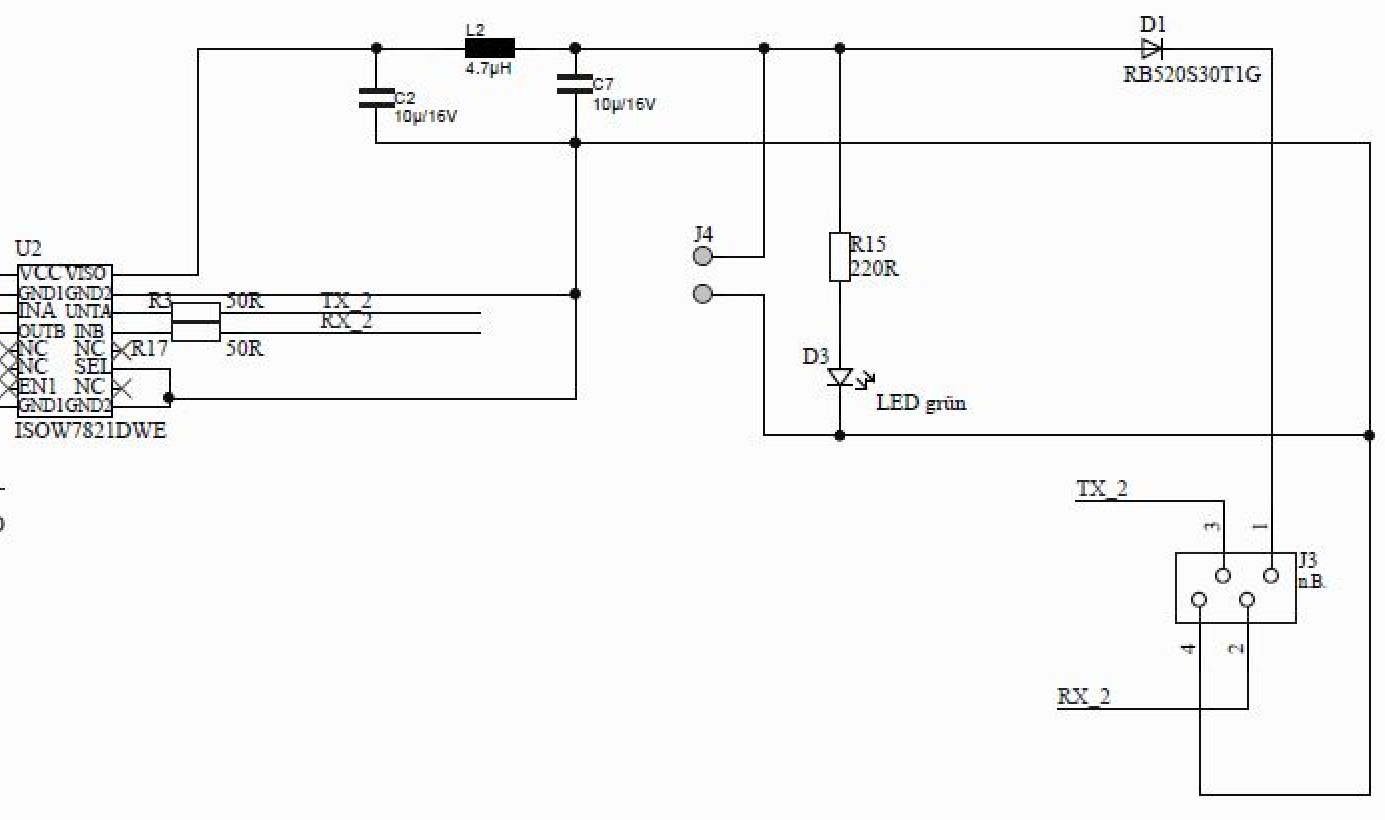(Please note I'm "just" a software developer with some knowledge in EE)
Long story short: We spent an enormous amount of money on 50 boards we have designed for mass programming one of our products. However, we found a problem we did not detect with our tests.
We have a digital isolator (TI ISOW7821DWE, U2) that also features a DC-DC isolator. However, this DC-DC isolator is extremely slow. When applying 5 V to its input, it needs around 5-7 ms to ramp up its output from 0 V to 5 V. With 3.3 V input, it needs almost 9-13 ms from 0 V to 3.3 V output. The LDO supplying the DC-DC isn't the problem, it ramps up its output to 3.3 V or 5 V in <100 µs. This slow ramp-up causes some MCUs on our boards to not start up properly, hence we can not program it.
We tested this with an "known good" DC-DC that ramps up the circuit from 0 V to 5 V in ~100 µs. Using this DC-DC, everything works fine. However, we have the attached circuit and parts now which we need to stick to and therefore somehow patch it.
Is there an easy way to "patch" the circuit, so it only outputs 5 V or 3.3 V to J3 after a certain threshold is reached (like 2 V, 2.8 V, 3.3 V, 3.5 V or 4 V)? I naively tried to use different Z-Diodes as a replacement for L2, with mixed results. The current drawn by our MCU's circuit (which is attached to J3) is around ~2 mA.

